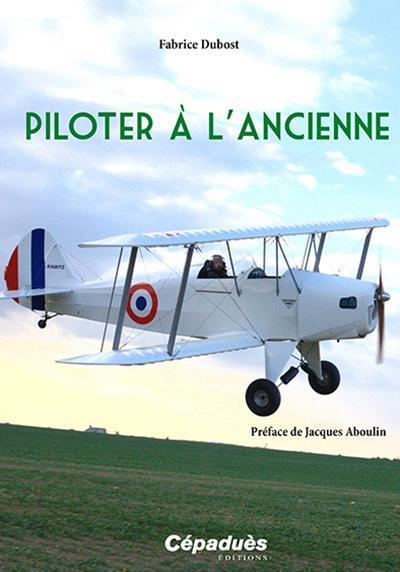Driving the old-fashioned way
Like all technical practices, flying airplanes began with intuition, empiricism, then common sense and finally technology. In a century of aviation history, methods of learning to fly have evolved to lead, at the beginning of the 21st century, to flights in which instrumentation is the pilot's main guide. However, the sensations or visual cues used by generations of pilots can still today contribute to the comfort and safety of a flight. With the aim of acquiring additional knowledge in piloting or simply to develop one's aeronautical culture, all pilots or enthusiasts will find in this book, in a playful way, the keys to piloting through a century of aviation. They will enter, for each phase of a flight, in the head of a beginner pilot of four significant eras: - the pre-World War I when the first books and articles gave the basic elements of piloting. This is the time of piloting by intuition. - The inter-war period when the first flying manuals appeared, mainly for military pilots. It is the time of piloting with sensations. - The post-war period when training methods developed with the growth of popular aviation. It is the period of piloting based on visual cues. - The modern era where reliability and technology are at the service of the pilot. It is the era of flying by parameters. If flying practices have evolved, it is in order to use the knowledge and technology of the moment in the service of flight safety, and there is no question of questioning today's lessons. However, it is useful to know the good practices of our ancestors who flew on unreliable and poorly instrumented machines. The actions learned by the fighter pilot in 1920 to take off his plane without instruments or the attitude of an Aéropostale pilot to land without an engine can still be useful to today's pilot in the event of a failure. The take-off manoeuvre of a conventional landing gear aircraft can help a pilot in the event of a breakdown.
Impossible de charger la disponibilité pour le Service de retrait
Piloter à l'ancienne est en rupture de stock et sera expédié dès qu’il sera de retour en stock.
Paiement sécurisé
Vos informations de paiement sont traitées de manière sécurisée. Nous ne stockons pas les détails de votre carte de crédit et n'avons pas accès aux informations de votre carte de crédit.





